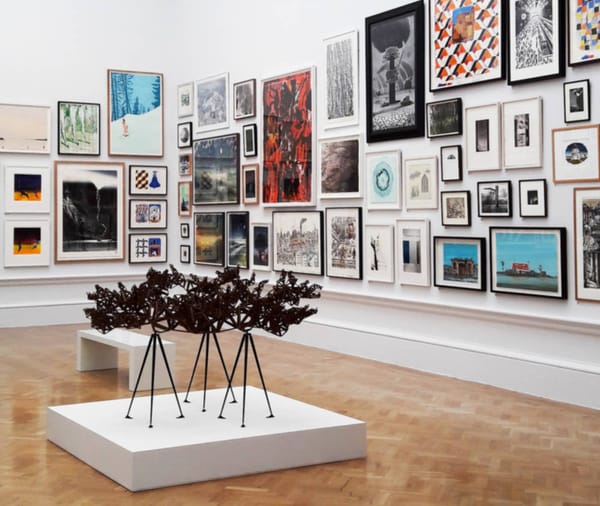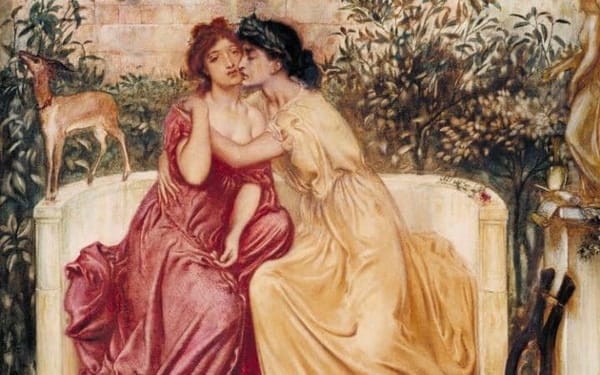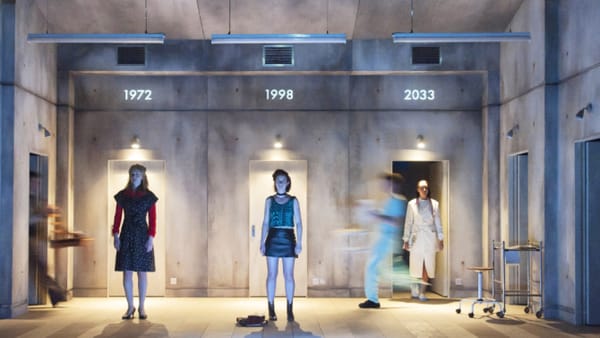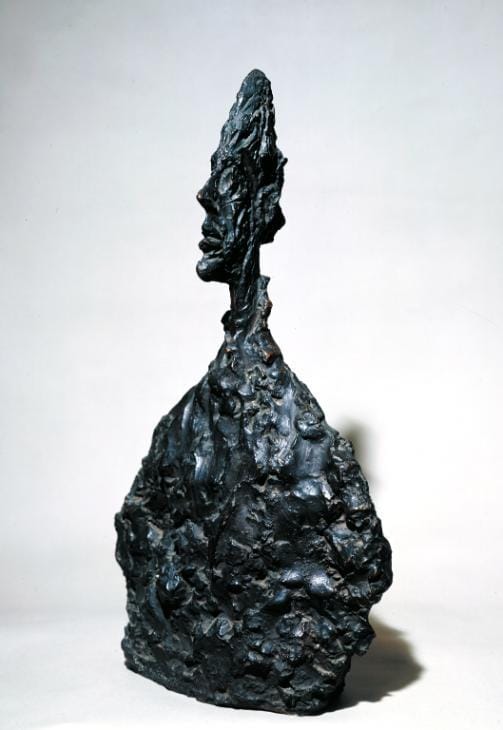Soul of a Nation | A searing portrait of the Civil Rights Era
Soul of a Nation not only tells the story of black artists in America searching for a unified voice in the turbulent years of the Civil Rights Era, it tells the story of a country coming to terms with its blood-soaked past and its struggle to shape a more equal future.

“Is there a black aesthetic, and if there is, what form does it take?” is the question that concerns the artists assembled for Soul of a Nation. For some, like the Spiral collective, the answer lay in monochrome paintings with a strong political message. In Norman Lewis’ America the Beautiful, a flurry of white brushstrokes fall like snowflakes across a pitch black canvas; look closer, and the pale smudges transfigure into hooded figures carrying crosses; not such an abstraction after all, but the march of the KKK. For others, such as Wadsworth Jarell, who was part of the AfriCOBRA group of artists, along with Jeff Donaldson and Jae Jarell, creating a strong black art movement meant addressing black communities, rather than bearing witness to the injustices and violence targeted towards them by white America.
During the seventies, many black artists began to look past America and integration. Inspired by the freedom movements in Africa, the idea of dividing America to create a separate black nation began to take hold. Afrocentricism is at the heart of Wadsworth Jarell’s portraits of Malcolm X and the members of the Black Panther Party. Bubbles of lemon yellows, cherry red, cerulean blue rise irrepressibly to the edges of the canvas, fizzing with energy. The afros of Huey Newton and Bobby Seale become halos, the bullets in their bandoliers sticks of coloured crayons. In one of Carolyn Lawrence’s canvases black children dance across the outline of the African continent painted in rich palette of orange and greens. Around them is the single repeated phrase; “black children keep your spirits free” – the seventies equivalent of #blackboyjoy.
The great tragedy of the exhibition is how relevant it all still feels, rather than a window into the past, Soul of Nation seems to reflect the experience of living as a black person in America in 2017. In Dana Chandler’s Fred Hampton’s Door 2, the yellow painted wood of a door still in its frame is peppered with bullet holes, in one corner a star spangled red, white, and blue sticker proclaims: “US Approved”. Chandler created the door to bear witness to the murder by police of Fred Hampton, a rising star in the Black Panther Party in 1969, but could as well have been erected in response to the dozens of present day killings of black Americans by police that are met with silence from the justice system.
The great tragedy of the exhibition is how relevant it all still feels, rather than a window into the past, Soul of Nation seems to reflect the experience of living as a black person in America in 2017.
In Soul of a Nation, music runs as a common thread, reflecting the music of the time and as a link tothe present. The back and forth between artists on how to best represent the experience of being black in America seems like a longform visual template for Kendrick Lamar’s DNA; “I got power, poison, pain, and joy inside my DNA”, elsewhere in the exhibition Cleveland Bellow’s image of a young black boy with his hands held above his head, either in joy or in deference to police guns, could well be the inspiration for a similar scene in Beyoncé’s Formation video.
Billie Holiday’s chilling Strange Fruit, “Black bodies swinging in the southern breeze / Strange fruit hanging from the poplar trees”, finds resonance in Archibald Motley’s painting of a lynched man. In a Betye Saar assemblage, a black skeleton hangs from the needle of a metronome, the instrument’s casing wallpapered with the (real) newspaper headline circled in red ink: “Lynched After Refusing to Dance on White’s Command”, Saar has titled the piece “I’ve got rhythm”. Music plays a joyous role in the work of William T Williams who likened his own abstract paintings as the equivalent of jazz improvisation, and in the work of William LaRue Johnson; each stripe of solid colour in his canvases represents a musical chord.
Though a consensus doesn’t emerge on a single black aesthetic or even whether it should exist, some of the most memorable, powerful works of the exhibition subvert mainstream characters to construct a new narrative. In The Liberation of Aunt Jemima, Betye Saar hands an ‘Aunt Jemima’ (a stereotypical black character created to sell pancake mix) figurine a shotgun, transforming the emblem of black female servility into one of militant resistance. “Superman never saved any black people”, said Bobby Seale, one of the founding members of the Black Panther Party, in response Barkley L. Hendricks’ self-portrait in Icon For My Man Superman, Hendricks dons a Superman t-shirt and a pair of sunglasses, painting himself against an aluminium background like a medieval icon. “So what Superman doesn’t save any black folk”, he seems to be saying, “we save ourselves”.
In Soul of a Nation, music runs as a common thread, the exhibition seems at times like a longform pictorial template for Kendrick Lamar’s DNA
“The history of America is the history of the Negro in America. And it’s not a pretty picture,” wrote James Baldwin, one of America’s greatest writers, who lived through the turbulent years of the Civil Rights Era. In bringing together hundreds of works from these defining two decades of America’s modern history, from Emory Douglas’ urgent, deft collages, to Alma Thomas’ huge abstract canvases and Roy deCavara’s enigmatic photographs of Harlem, Soul of a Nation not only tells the story of black artists in America searching for a unified voice in the “age of black power”, it tells the story of a country coming to terms with its blood-soaked past and its struggle to shape a more equal future. What emerges is not always a pretty picture, but it is not always a bleak one either. There is brutality, pain, and horror, but extraordinary grace too; courage, and joy, and immense vision.
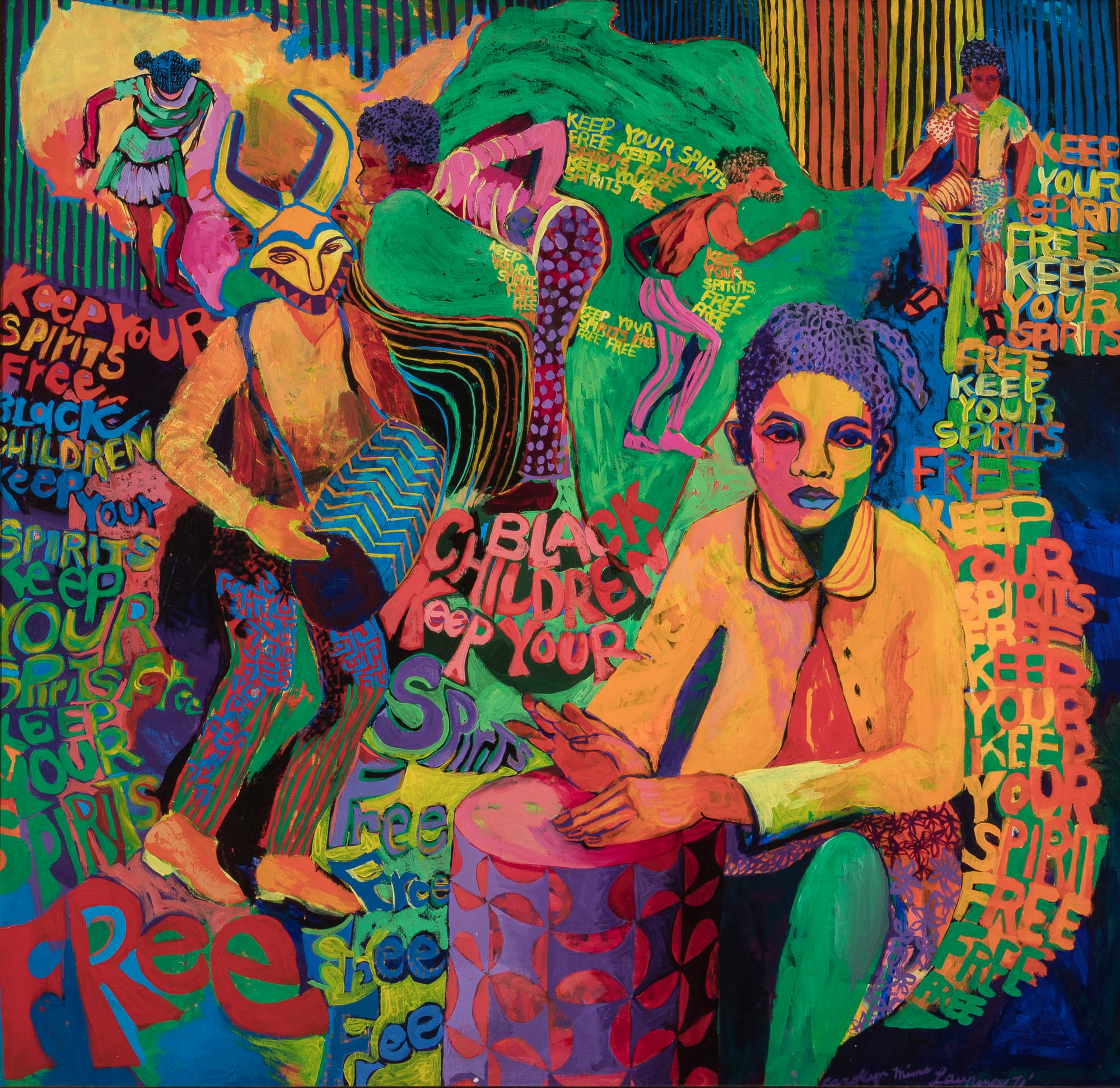
5 stars
Soul of a Nation: Art in the Age of Black Power (1963-83) is on at the Tate Modern until 22nd October 2017
Adult £16.50 (without donation £15) Concession £14.50 (without donation £13.10)

